Kabuki is a captivating traditional Japanese theater that has enthralled audiences for centuries. This visually stunning art form is renowned for its stylized techniques, elaborate costumes, and dramatic makeup. Kabuki plays often depict historical events, romantic dramas, and supernatural tales, reflecting the Japanese spiritual worldview and fostering cultural pride. While the intricate stage choreography, symbolic gestures, and emotive dialogue create a mesmerizing theatrical experience, the audience’s etiquette and the preservation of Kabuki’s traditional aesthetics are just as integral to its enduring legacy. Delving into the world of Kabuki provides a unique glimpse into Japan’s rich performing arts heritage.
Key Points

- Kabuki is a traditional Japanese theater form known for its stylized performance techniques, elaborate costumes, and dramatic makeup.
- Kabuki plays revolve around historical events, romantic dramas, and supernatural tales, reflecting the Japanese spiritual worldview.
- Kabuki performances feature intricate stage choreography, stylized movements and gestures, and visually striking costumes and makeup.
- The Kabuki stage design incorporates elements like the Hanamichi (extended stage), revolving stages, and elaborate backdrops to enhance the dramatic experience.
- Experiencing Kabuki in Tokyo offers an immersive cultural experience, with guided tours, tea sets, and English subtitle devices available.
Overview of Kabuki Theater
Kabuki is a traditional Japanese theater form known for its highly stylized performance techniques, elaborate costumes, and dramatic makeup.
It originated in the early 17th century and has since become a beloved and iconic part of Japanese culture.
Kabuki actors, known as ‘kabukiza,’ are renowned for their extraordinary acting skills, which often involve exaggerated movements, gestures, and facial expressions.
The plays themselves typically revolve around historical events, romantic dramas, and supernatural tales, with a focus on grand spectacle and emotional intensity.
Audiences are captivated by the vibrant colors, stunning sets, and the sheer artistry on display.
Despite its long history, Kabuki remains a living, evolving art form, continuing to enchant and inspire audiences in Japan and around the world.
You can also read our reviews of more tours and experiences in Ginza.
Kabuki Cultural Significance
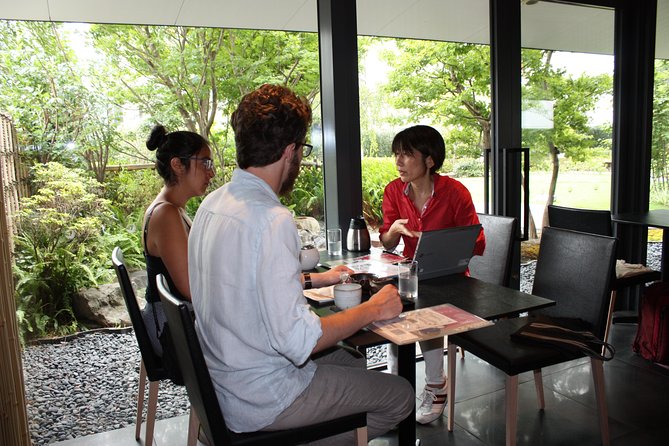
Beyond its theatrical grandeur, Kabuki has long been deeply intertwined with Japanese cultural identity and heritage. It’s a living embodiment of the country’s rich artistic traditions, reflecting the values, beliefs, and historical narratives that have shaped the nation. Kabuki’s enduring popularity underscores its role as a cherished cultural touchstone, captivating audiences both within Japan and across the globe.
| Cultural Significance | Historical Influence | Artistic Expression |
|---|---|---|
| Preservation of traditional Japanese aesthetics | Depiction of samurai culture and feudal-era narratives | Elaborate costumes, masks, and stage design |
| Representation of the Japanese spiritual worldview | Reflection of societal changes and power dynamics | Innovative use of music, dance, and poetry |
| Fostering of communal bonds and cultural pride | Transmission of cultural values and legends across generations | Showcasing of virtuosic acting and movement techniques |
Kabuki Performance Elements
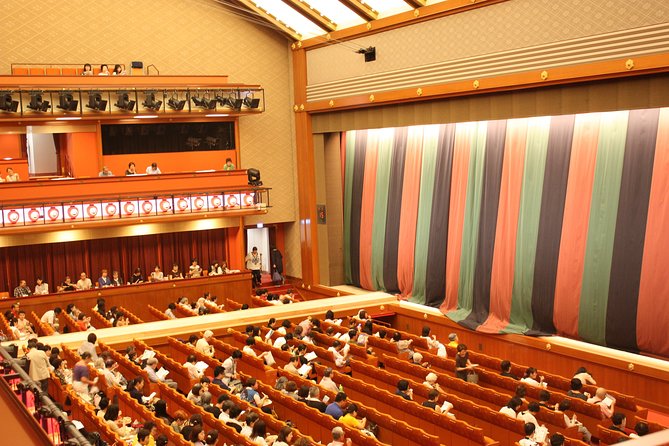
The intricate stage choreography, colorful costumes, and expressive makeup all come together to create the captivating spectacle of a Kabuki performance.
Kabuki actors meticulously execute stylized movements, relying on a repertoire of gestures and poses that convey a wide range of emotions.
Elaborate costumes, featuring intricate patterns and lavish embroidery, add to the visual grandeur.
The actors’ faces are adorned with thick, theatrical makeup, emphasizing their characters’ distinct features and personalities.
These elements combine to produce a highly stylized, aesthetically striking form of theater that has captivated audiences for centuries.
Through this unique blend of visual and performative components, Kabuki transports viewers into a world of heightened drama and timeless artistry.
Kabuki Costume and Makeup
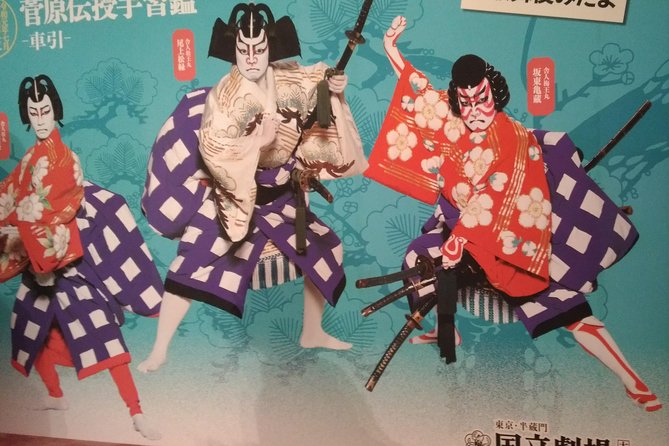
They are the visual elements that captivate audiences during a Kabuki performance. Intricate costumes adorned with elaborate patterns and embroidery, along with the actors’ theatrical makeup, create a visually striking spectacle that transports viewers into the world of this traditional Japanese art form.
| Kabuki Costume Elements | Purpose | Significance |
|---|---|---|
| Elaborate Kimono | Denote character status and role | Visually striking and symbolic |
| Ornate Headpieces | Enhance character’s presence | Convey power, authority, or social rank |
| Theatrical Makeup | Exaggerate facial features | Heighten emotional expression and character traits |
The meticulous attention to costume and makeup in Kabuki is a crucial aspect of the performance, elevating the artistry and drama for the audience.
Kabuki Stage Design
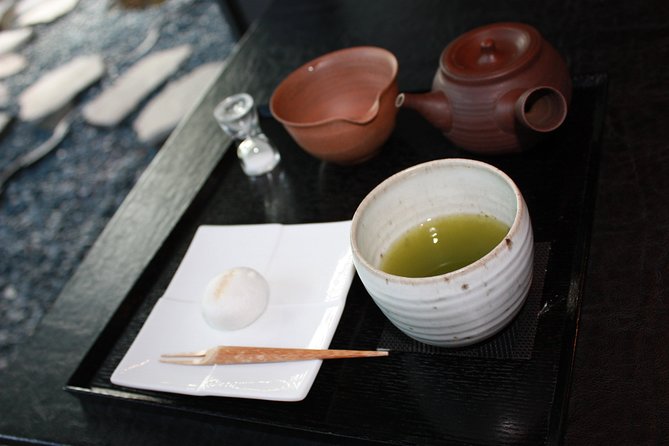
Along With the captivating costumes and makeup, Kabuki’s stage design plays a vital role in immersing audiences in the performance.
The Kabuki stage features a unique and intricate layout, carefully crafted to enhance the dramatic experience. The stage is divided into distinct areas, each serving a specific purpose. The main stage, known as the Hanamichi, extends into the audience, allowing for dynamic interactions between actors and spectators.
Elaborate backdrops and innovative set pieces, such as revolving stages and trapdoors, create stunning visual effects that complement the actors’ performances. The lighting and sound design further heighten the production’s atmosphere, transporting the audience into the world of Kabuki.
Kabuki Storytelling Techniques
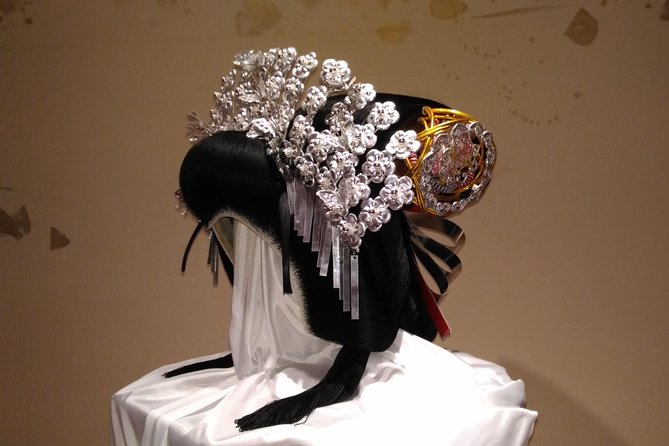
Kabuki’s captivating storytelling techniques transport audiences into the heart of each performance, blending intricate choreography, emotive dialogue, and symbolic gestures to weave intricate narratives.
The actors skillfully utilize a range of expressive tools, from the elegant movements of their fans to the dramatic changes in vocal pitch, to convey the emotional depth of their characters.
The use of elaborate costumes, extravagant makeup, and stylized stage sets further enhances the immersive experience, transporting viewers to different times and places.
Kabuki’s storytelling prowess lies in its ability to captivate audiences, drawing them into the high-stakes dramas and intimate moments that unfold on the stage.
Kabuki Audience Etiquette
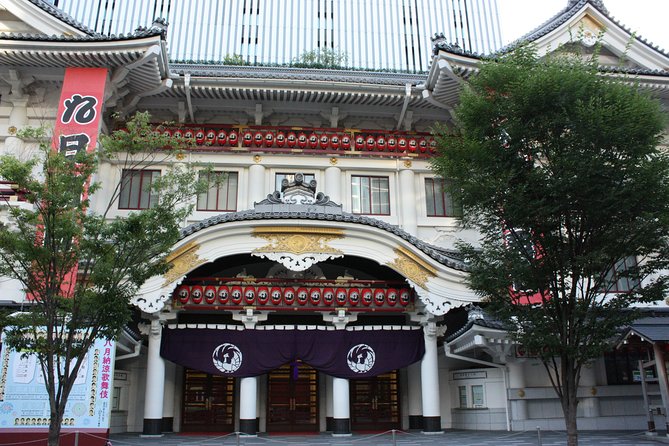
Attending a Kabuki performance requires an appreciation for the art form’s unique audience etiquette. Spectators must observe specific protocols to fully enjoy the captivating storytelling and heighten the overall theatrical experience. For instance, theatergoers are expected to refrain from excessive noise, applauding at the wrong times, or using electronic devices. Instead, they should politely express their appreciation through traditional forms like calling out the actor’s name or yelling "Yabai!" (amazing) at key moments. Plus, audience members adhere to a dress code, with formal attire being the norm. By respecting these conventions, Kabuki-goers can ensure they have a memorable and enriching cultural encounter.
| Kabuki Audience Etiquette | |||
|---|---|---|---|
| Refrain from excessive noise | Applaud at appropriate times | Avoid using electronic devices | Observe dress code |
| Call out actor’s name | Yell "Yabai!" at key moments | Fully immerse in the performance | Enhance the theatrical experience |
Experiencing Kabuki in Tokyo
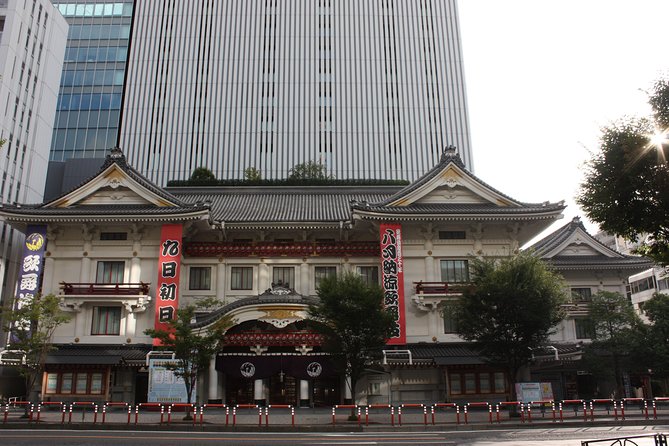
For those seeking an immersive cultural experience in Tokyo, exploring the captivating world of Kabuki theater offers a unique opportunity. Kabuki, a centuries-old dramatic art form, transports audiences through its intricate performances, captivating costumes, and striking stage design.
The guided Kabuki experience in Tokyo provides visitors with an all-inclusive package, including a Japanese tea set with sweets, a Kabuki show ticket, and an English subtitle device rental to fully appreciate the performance. With hotel pickup service, travelers can conveniently access the iconic Kabuki Inari Shrine, the meeting point for this immersive cultural adventure.
Whether seasoned theater-goers or first-time visitors, this Kabuki experience promises to leave a lasting impression on those eager to explore Japan’s rich theatrical heritage.
Frequently Asked Questions
How Long Is a Typical Kabuki Performance?
A typical Kabuki performance can last several hours, often between 3 to 5 hours. The length can vary depending on the specific production, but audiences should expect an immersive theatrical experience that showcases the art form’s intricate storytelling and elaborate staging.
Can I Take Photos and Videos During the Show?
During the Kabuki show, taking photos and videos is generally not allowed. Visitors must respect the performers and follow the venue’s policies. Photography may distract from the performance, so it’s best to experience the show without disruption.
Is Kabuki Theater Suitable for Children?
Kabuki theater can be suitable for children, though the performances may contain complex storylines and mature themes that younger audiences may not fully comprehend. Parents should exercise discretion and consider the child’s age and attention span before attending.
What Should I Wear to a Kabuki Performance?
For a Kabuki performance, one should wear smart, casual attire. Traditional Japanese dress like kimonos is not required, but visitors should avoid shorts, tank tops, or overly casual clothing. The focus should be on enjoying the cultural experience comfortably.
Are There Any English Language Kabuki Performances?
Yes, there are English-language kabuki performances. Many Tokyo kabuki theaters offer subtitles or audio guides in English for select shows, allowing non-Japanese speakers to enjoy the traditional Japanese theater art form.
Recap
Kabuki theater’s centuries-old traditions captivate audiences with its stylized techniques, elaborate costumes, and dramatic makeup.
As a cherished part of Japanese heritage, Kabuki offers a unique glimpse into the country’s rich performing arts legacy, reflecting its spiritual worldview and fostering cultural pride.
Through its intricate stage choreography, symbolic gestures, and emotive dialogue, Kabuki continues to preserve the essence of Japan’s enduring theatrical artistry.
More Tour Reviews in Ginza
- Best of Tokyo Affordable Budget 3 Days Private Tour With Guide
- Japanese Sake Pairing at Ginza Hassen
- All Inclusive・Private Tour Dinner With Mukojima Geisha
- Tokyo Ginza Deep Back Alley Walking Tour
- Private All Inclusive Neo Tokyo Tour on a Luxury Car
- All Inclusive・Private Tour Kamakura Tour on a Luxury Car
Not for you? Here's more things to do in Ginza we have recnetly reviewed
- 3 Best Guided Tours In Ginza
- 2 Best Private Car With Driver Services In Ginza
- 7 Best Food Tours In Ginza
- Chefs Choice Sushi & Tempura Luxury Foodie Tour in Ginza
- Luxury Kimono Photoshoot at Ginza Tokyo
- All Inclusive・Private Tour Exploring Nikko on Your Preferences
- All Inclusive・Private Tour Japanese Wedding and Tokyo Tour
- All Inclusive・Private Tour Sakura Shrimp and Ukiyoe Experience
- Tokyo Ginza Head Spa Trial With Healing Course 75
- Private Car Tours Explore Tokyo City
- Exclusive Japanese Pufferfish Dining Experience in Tokyo
- Tokyo, Learn About Japanese Traditional Art KABUKI in Ginza
